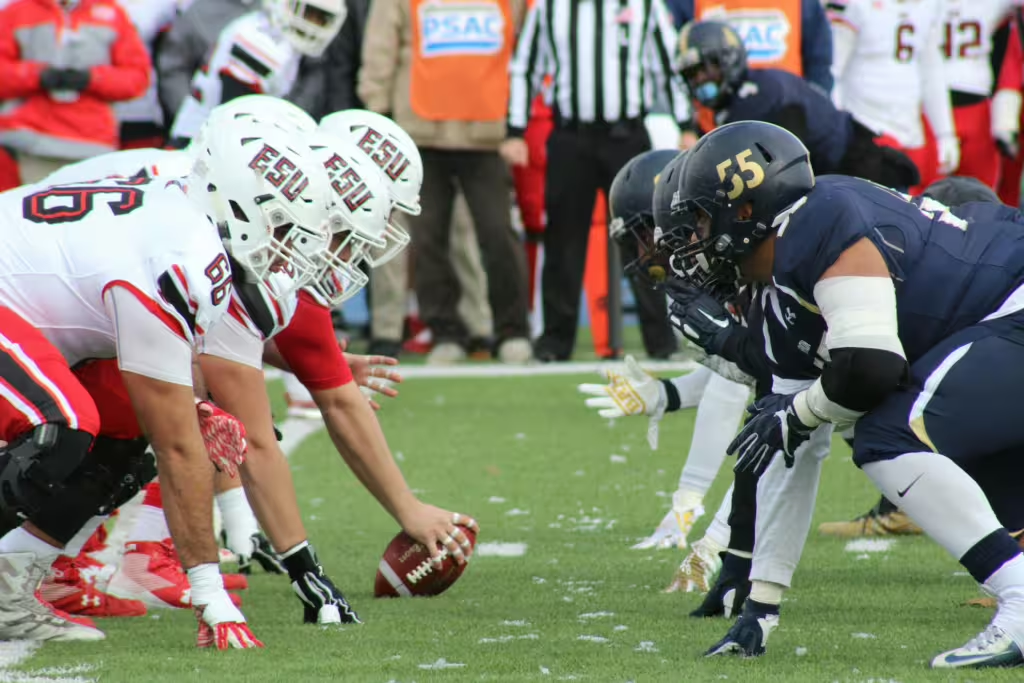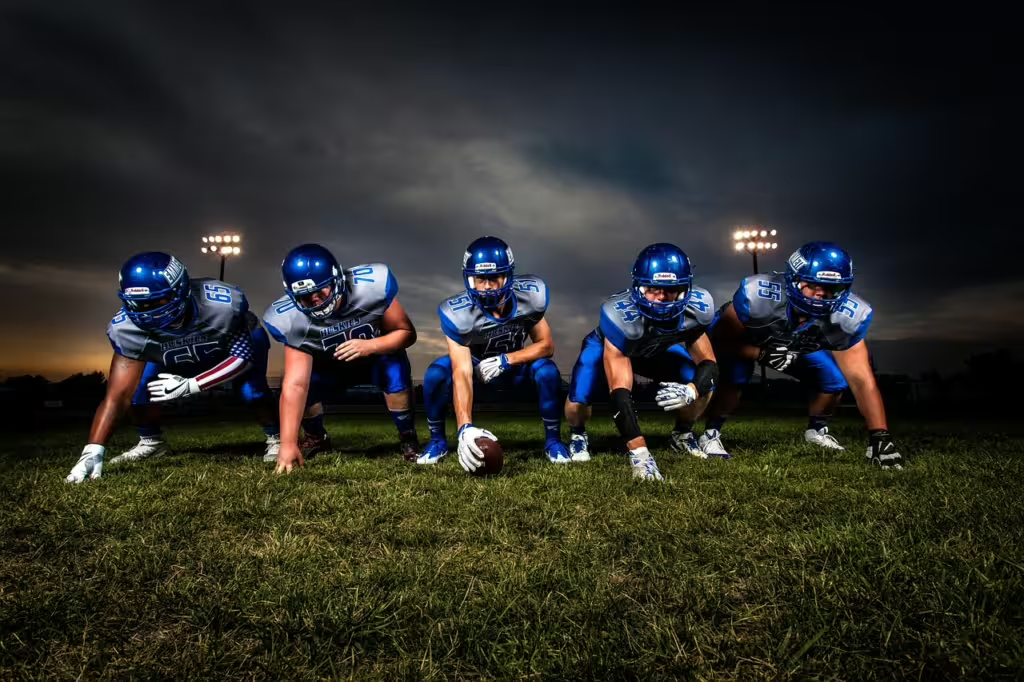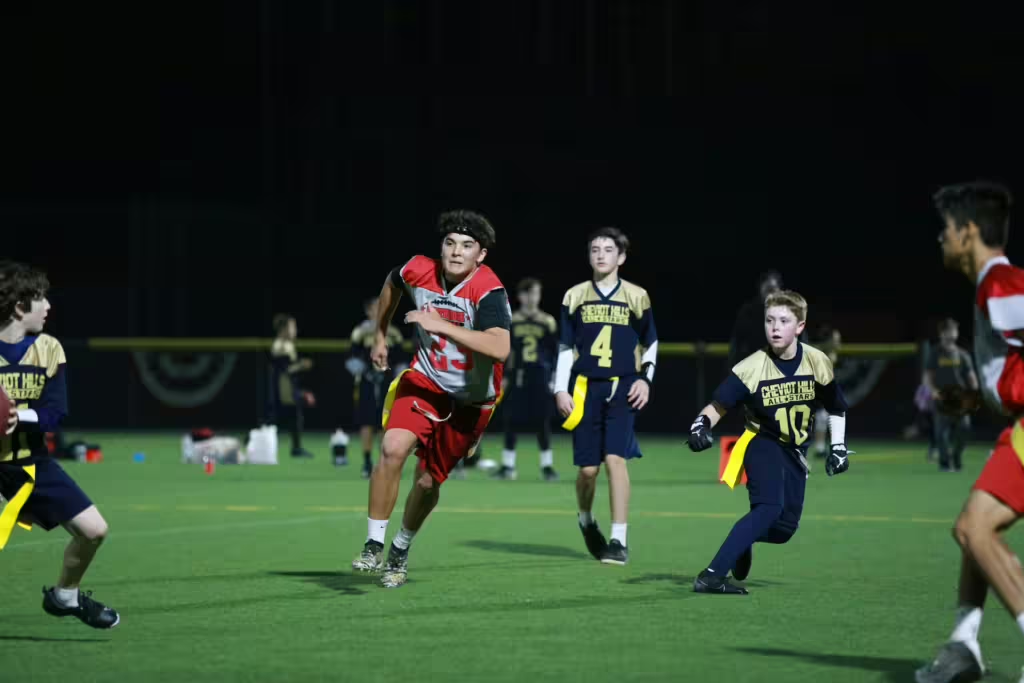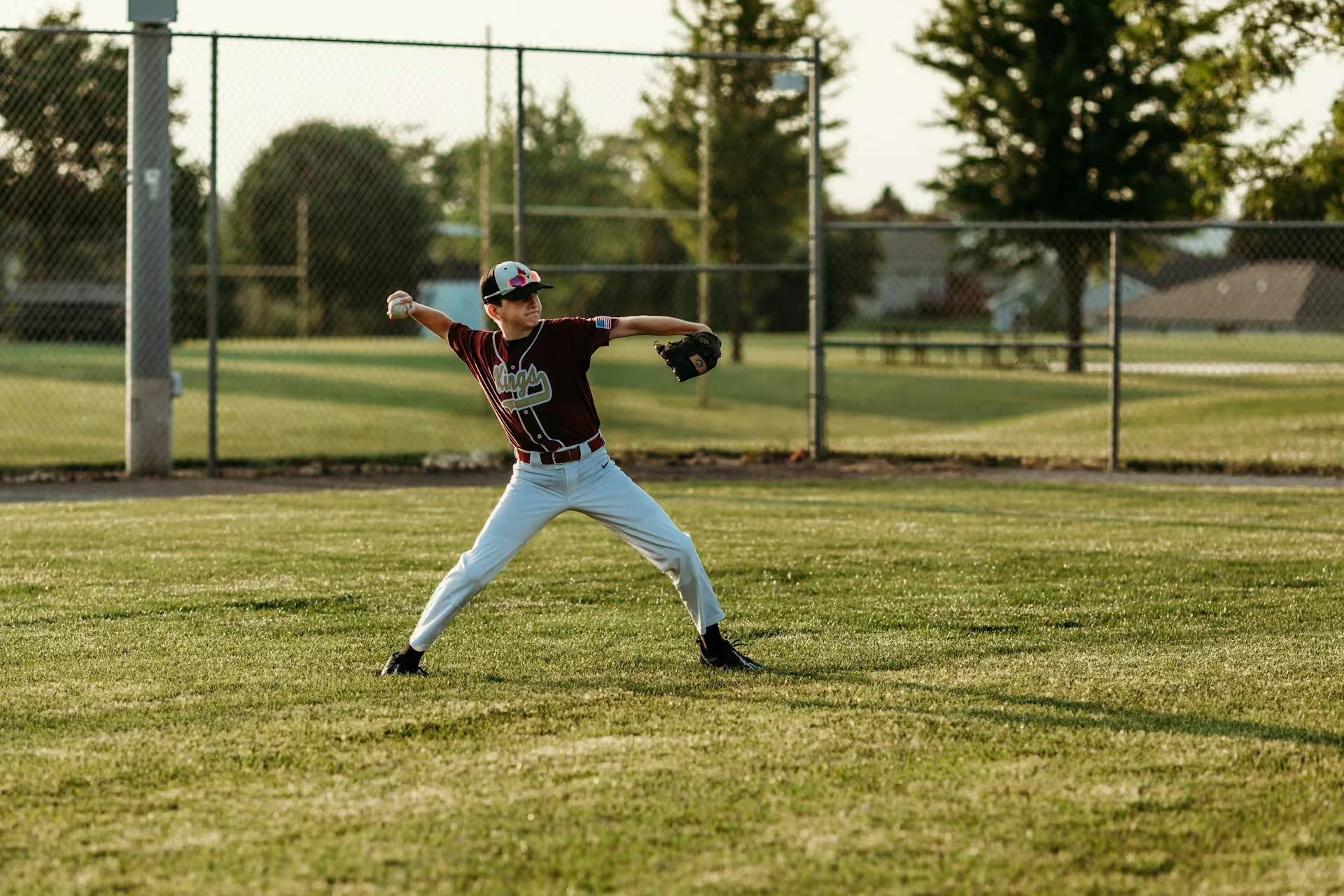If the Super Bowl is any indication, Americans are pretty obsessed with football. Though not explicitly labeled as “America’s favorite pastime,” like baseball, football has still emerged as one of the largest, most crowd-pleasing sports spectacles ever conceived by the mind of man. Not only is it dynamic and exhilarating to watch, those that play learn the value of teamwork, perseverance, and have fun, all at the same time!
Still, those of us who have seen or enjoy football games regularly, know that it isn’t the gentlest of sports activities. Thus, as parents of kids who do express interest in sports, it’s only natural for us to wonder if football is safe for children?
Fortunately, there is a somewhat less-combative form of football that is exists out in the world; flag football. In many circles, flag football is touted as a much safer alternative to traditional “tackle football”…but how much safer could it actually be?
In this article, we plan to answer whether or not flag football is the safe option for concerned parents. We will discuss the benefits of both—physical fitness, discipline, social development—as well as discussing how each come with its own risks and safety considerations. Finally, we will go over both the difficult nuances of either option, as well as the overt pros and cons that come from choosing one over the other.

Football Basics Of Both
Before we compare the relative safety of flag and tackle football, we should quickly define the rules that make these two sports so different from one another.
Flag Football:
There is no, rather there should be no physical contact in this version of the sport; besides grabbing the opposing players flag, that is. This action is what essentially replaces tackling, as players pull the flag from the ball carriers belt in order to stop the play. Because the chance of injury is greatly reduced, players need less heavy padding and equipment. Really all they need is some cleats and a flag belt. There are fewer players on a flag football team as well, between 5 and 7. Other than that, it is played just like traditional American football, with two end zones, one football, and a rectangular field of play.
Tackle Football:
Tackle football, on the other hand, is a full-contact sport where players bring opponents to the ground in order to stop their progress towards an end zone. As a result, players are required to wear full gear, namely, a helmet, shoulder pads, and other protective equipment. The teams tend to be larger and more structured than in flag football, which tends to be more light and fun.
Finally, where flag football emphasizes agility. speed, and unique strategies, tackle football is more attuned to strength, physicality, and traditional football strategies. Nevertheless, both versions of the sport still promote teamwork, skill development, and sportsmanship, though if the physical demands and risks are very different.
What Safety Concerns Should Parents Have?
Modern investigations into the severe, often debilitating injuries suffered by professional football players have revealed that, to the surprise of no one, the sport can be highly dangerous. Indeed, over the past two decades, growing research has raised concerns about the safety of tackle football when it comes to young athletes; even those of middle and high school age. The primary concerns about football include the potential for concussions, head trauma, and brain damage. There are even instances where long-term brain health has suffered in developing athletes. Broken bones, sprains, strains, and joint injuries are equally common.
What most people fail to realize are the psychological effects that these injuries and the recovery process, can have on young minds. Children can come out of these experiences with physical and mental scars, both of which can last a lifetime, effecting how they interact, move, think, and approach sports, in general. This is perhaps why the conversation around flag football has become more prominent. Parents are concerned by what they read and they are seeking a safer way to allow their kids to engage with the sport, without having to worry about full-contact or severe injuries.
Are Injuries Common?
We don’t want to worry any parents out there whose children are already playing and loving tackle football, but we would be remiss if we did not at least touch on what studies and statistics say about the risk of injury.
A 2021 study published in the Orthopaedic Journal of Sports Medicine found that tackle football had substantially higher injury rates than those among children who played flag football. The study paid particular attention to children between the ages of 6 and 14. As we touched on earlier, the most common injuries were found to be concussions, fractures, and sprains. This is all backed by the fact that youth tackle football accounts for one of the highest concussion rates among all youth sports.
Flag football has its own array of injuries too, of course, though they aren’t nearly as serious. Most reported injuries tend to be minor muscle pulls, bruises, and the occasional sprain. Concussions did occur from time to time, but they were far less common, largely due to the lack of head-to-head contact.
The bottom line is this; flag football is statistically safer than tackle football—especially when it comes to serious head and neck injuries.

What Age Does Tackling Start?
So if your kid has grown up past the age of flag football and wants to be the next Peyton or Eli Manning, when should they start? When should kids be introduced to tackle football? High school? College? Is middle school too early or too late for them to get a good enough background to become a pro player?
Youth Tackle Football (Ages 5–13):
Surprisingly enough, many tackle leagues accept children as young as 5 or 6 into the sport, though critics argue that this might be far too young. Their main concern is that, at this age, the child’s brain is still developing, so they are simply not ready for that degree of physical contact. There is even evidence from Boston University even suggests that players who started tackle football before age 12 had a higher risk of cognitive issues later in life.
High School and Beyond:
The good news is that, by high school, most players have stronger neck muscles and more control over their bodies. They also tend to have a better understanding of technique and how to play safely. At these stages, coaches also tend to be more focused on safety and proper form, to prevent injuries. Kids are a lot bigger and stronger at this age, full of hormones and untapped potential, so they definitely need to be reigned in some.
The Many Benefits of Both
While safety is always going to be the top priority in youth football, there are other considerations that parents should make when determining whether they want their kids to play one or the other.
Benefits of Flag Football:
- There is a lower risk of injury.
- Flag football is great for beginners or kids new to football, in general.
- Organized sports build confidence and help kids develop a love of the game.
- Flag football tends to be more inclusive for kids of all sizes and abilities than its traditional counterpart.
- Flag football leagues are often co-ed, encouraging mixed play among kids of all genders.
Benefits of Tackle Football:
- Tackle football teaches traditional football techniques and formations that kids can use if they decide to pursue a sports career.
- Traditional football tends to appeal most to kids who want a more physical, competitive experience
- Tackle football does build mental and physical toughness and discipline in young athletes.
- Peewee football leagues tend to prepare budding athletes for high school football and beyond.
- As with most team sports, football helps kids develop a strong sense of team identity and camaraderie…but so does flag football, really.

Cultured Athlete Says…
As you can see, deciding whether flag football or tackle football is the preferred football form, requires at least a little bit of understanding on the part of the parent. The numbers tell us, unequivocally, that flag football is the safer option for most young children, but that doesn’t necessarily mean that tackle football is off the table indefinitely.
As your child ages up, toughens up, and smartens up; as all children eventually do, they may find that they want a great physical challenge. This is where tackle football can become the next logical step up in their sports journey. Indeed, with the right timing, supervision, and training, even a rough-and-tumble game of football can cease being a safety concern and become a rewarding experience for children.
Still, we know and you know that the end of the day, the best choice is one that matches your child. Their age, abilities, personality, and goals should all be kept in perspective when deciding which football form to take. In the end, it is up to you to make the best decision for you and your family and now that you have the tools, we’re sure that you’ll make the right one, every time.
Discover more from CulturedAthlete
Subscribe to get the latest posts sent to your email.






